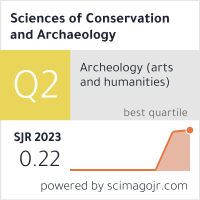Teaching Physical Education to Students with Hearing Impairments: An Approach to Physical Educators' Practices
Keywords:
Physical Education, Hearing Impairments, Educators' Practices, Inclusive Pedagogy, Adaptive StrategiesAbstract
Introduction: Hearing-impaired students face challenges in physical education, including social interaction, communication, and auditory signals. However, creative instructional strategies can help them fully participate in physical activities, promoting inclusion.
Objective: The aim is to investigate the techniques and tactics that special education teachers employ when instructing physical education to students with hearing impairments. Furthermore, it will provide valuable support by shedding light on the most effective methods and suggesting potential areas for improvement within this specific educational context.
Methods: The study employed a qualitative method using convenient sampling and a purposive approach to gather data from (3) three special education teachers teaching students with hearing impairment at La Salle University in the City of Ozamis during the school year 2023-2024. The tools that were used to gather information from participants were semi-structured interview guides, which were validated by 3 experts in the specialization. Subsequently, a focus group discussion was conducted with two teachers while the other was interviewed via phone because of availability during the said FGD which lasted for 28 minutes due to some clarifications and additional follow-up questions of the researchers' observations.
Results: The study reveals the theme and sub-themes generated from this study participants as diversity and professional development; enhancing communication and teaching strategies; overcoming challenges in inclusive education; empowering growth and learning through involvement and engagement; and by empowering inclusive classrooms, they can help overcome and be where they intended to be in the future.
Conclusion: The study found that while teachers instructing students with hearing impairments have expertise in their field, they lack fundamental training in teaching physical education, which is one of the challenges faced. They use various strategies to enhance communication, adapt teaching methods, and overcome challenges in inclusive classrooms. This promotes social interaction, skill development, and overall educational outcomes for these students. Special education teachers play a crucial role in empowering hearing-impaired students to participate fully in physical education classes. The researcher constructed a conceptual model to elucidate the study's outcomes and provide a framework for future investigations, drawing upon the aforementioned findings and suggestions.




